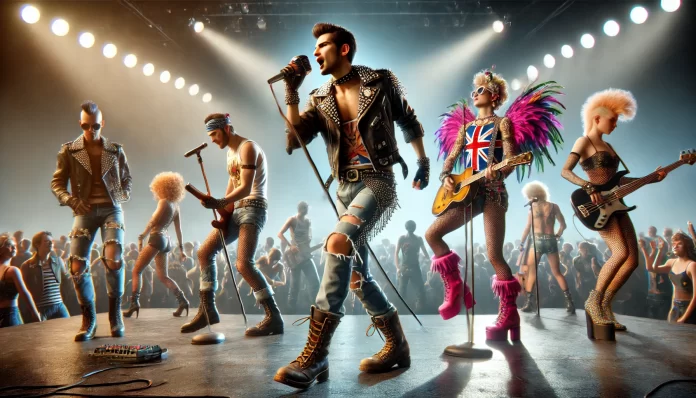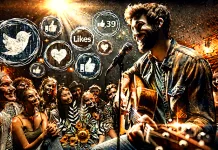
Music and fashion have always shared a symbiotic relationship, where one often influences and inspires the other. From the rebellious looks of punk rock to the flamboyant glamour of glam rock, the connection between music and fashion transcends mere aesthetics—it is a reflection of cultural identity, movements, and social values. In today’s world, this intersection continues to evolve, with artists not only shaping trends but also collaborating with fashion designers to create iconic moments that influence industries and audiences alike. This article delves into the historical context of music and fashion’s relationship, contemporary trends, significant collaborations, and the future of this powerful cultural interplay.
Historical Context: Music and Fashion Through the Decades
The relationship between music and fashion dates back decades, with pivotal moments illustrating how these two industries have continuously shaped each other. In the 1970s, the punk movement, exemplified by The Sex Pistols, birthed an anti-establishment aesthetic, characterized by torn clothing, safety pins, and leather. Vivienne Westwood became a central figure, translating punk’s rebellious energy into enduring fashion statements. Similarly, glam rock, led by icons like David Bowie, introduced androgynous, glittering styles that challenged gender norms, pushing mainstream fashion boundaries.
Hip-hop, which emerged in the late 1970s and 1980s, also carried a distinct fashion identity. Oversized clothing, gold chains, and sneakers became synonymous with the genre, and artists like Run-DMC helped cement brands like Adidas into the fabric of street culture. These historical movements reveal how music serves as more than entertainment—it’s a cultural force driving sartorial change.
Current Trends: Artists as Fashion Icons
Today, artists like Billie Eilish, Harry Styles, and Lil Nas X are reshaping the fashion landscape by defying traditional norms and promoting self-expression. Billie Eilish, for instance, uses oversized clothing to reject societal pressures surrounding body image, becoming an icon of body autonomy. Her collaboration with Gucci reflects a shared commitment to gender-neutral fashion, aligning with modern social movements.
Harry Styles has blurred gender boundaries, donning everything from floral suits to sheer blouses. His Vogue cover in a dress sparked critical conversations about gender-fluid fashion, positioning Styles as a champion of individuality and non-binary aesthetics in mainstream fashion.
Meanwhile, Lil Nas X has become synonymous with flamboyant self-expression. From his “Satan Shoes” collaboration with MSCHF to his bold music videos, Lil Nas X pushes boundaries, using fashion to challenge societal expectations around sexuality and identity.
Fashion Collaborations: When Music Meets Design
The synergy between music and fashion is perhaps best exemplified by high-profile artist-designer collaborations. Travis Scott’s partnership with Nike has created some of the most sought-after sneaker releases, blending the worlds of street culture, music, and fashion. His limited-edition Air Jordans transcend the boundaries of typical endorsements, becoming cultural symbols in their own right.
Billie Eilish’s collaboration with Gucci, which features oversized silhouettes and neon accents, also embodies this relationship. Her distinctive look not only reflects her style but signals a shared cultural ethos with the designer—one that champions sustainability and inclusivity.
Cultural Movements: Music Genres Shaping Fashion
Each music genre leaves a distinct mark on fashion trends. Hip-hop, which has been instrumental in shaping streetwear culture, continues to dominate fashion through influential figures like Kanye West and his Yeezy brand. The blending of streetwear with high fashion, as seen with Virgil Abloh’s work at Louis Vuitton, demonstrates the deep cultural impact hip-hop has had on global fashion.
Western-inspired fashion, meanwhile, has enjoyed a resurgence thanks to artists like Kacey Musgraves and Lil Nas X. Cowboy boots, fringed jackets, and traditional Americana aesthetics have been reinvigorated, blending the timelessness of country fashion with modern, pop-driven sensibilities.
Social Media Influence: Amplifying the Music-Fashion Connection
Social media platforms like Instagram and TikTok have accelerated the connection between music and fashion, allowing artists to influence style trends in real time. TikTok, in particular, has played a crucial role in driving music-driven fashion challenges, often resulting in the mass adoption of new looks. On the other hand, Instagram offers a direct channel for artists like Rihanna, whose Fenty line reflects her blend of music, fashion, and entrepreneurship.
The emotional connection between fans and artists is amplified by these platforms, where fans often emulate the fashion choices of their idols, further embedding the music-fashion nexus into everyday culture.
Audience Reception: Emotional Connection and Fashion Influence
The emotional bond between fans and their favorite artists deepens when fashion becomes part of the conversation. Artists like Billie Eilish and Harry Styles offer fans a unique opportunity to express their individuality through style, making fashion an integral part of their brand identity. Fans often replicate their idols’ looks, a phenomenon that drives consumer behavior and establishes fashion as an extension of artistic expression.
Billie Eilish’s oversized, androgynous style has inspired young fans to reject conventional beauty standards. Likewise, Harry Styles’ gender-fluid fashion choices resonate with fans who see his boldness as a beacon of authenticity, inspiring them to embrace their unique styles.
The Future of Music and Fashion
As technology continues to evolve, so too will the intersection of music and fashion. Virtual reality (VR) and augmented reality (AR) may revolutionize how fans experience fashion, with artists offering virtual fashion shows or digitally augmented outfits. Platforms like Fortnite and Roblox have already experimented with virtual concerts, and these immersive experiences could redefine the music-fashion dynamic in the digital age.
Sustainability will also play a crucial role in future collaborations. As consumers demand eco-conscious products, artists and fashion houses may shift toward more sustainable practices, blending music, culture, and environmental advocacy.
Conclusion: The Ever-Evolving Relationship Between Music and Fashion
Music Industry Weekly acknowledges that the intersection of music and fashion is a dynamic relationship that shapes contemporary culture. From the rebellious roots of punk to today’s trailblazing artists like Billie Eilish, Harry Styles, and Lil Nas X, music continues to influence how we dress and express ourselves. As artists push boundaries and redefine style, they reflect larger cultural conversations about identity, gender, and individuality. As technology and sustainability drive future innovations, the bond between music and fashion will continue to evolve, playing a vital role in shaping the future of culture.







